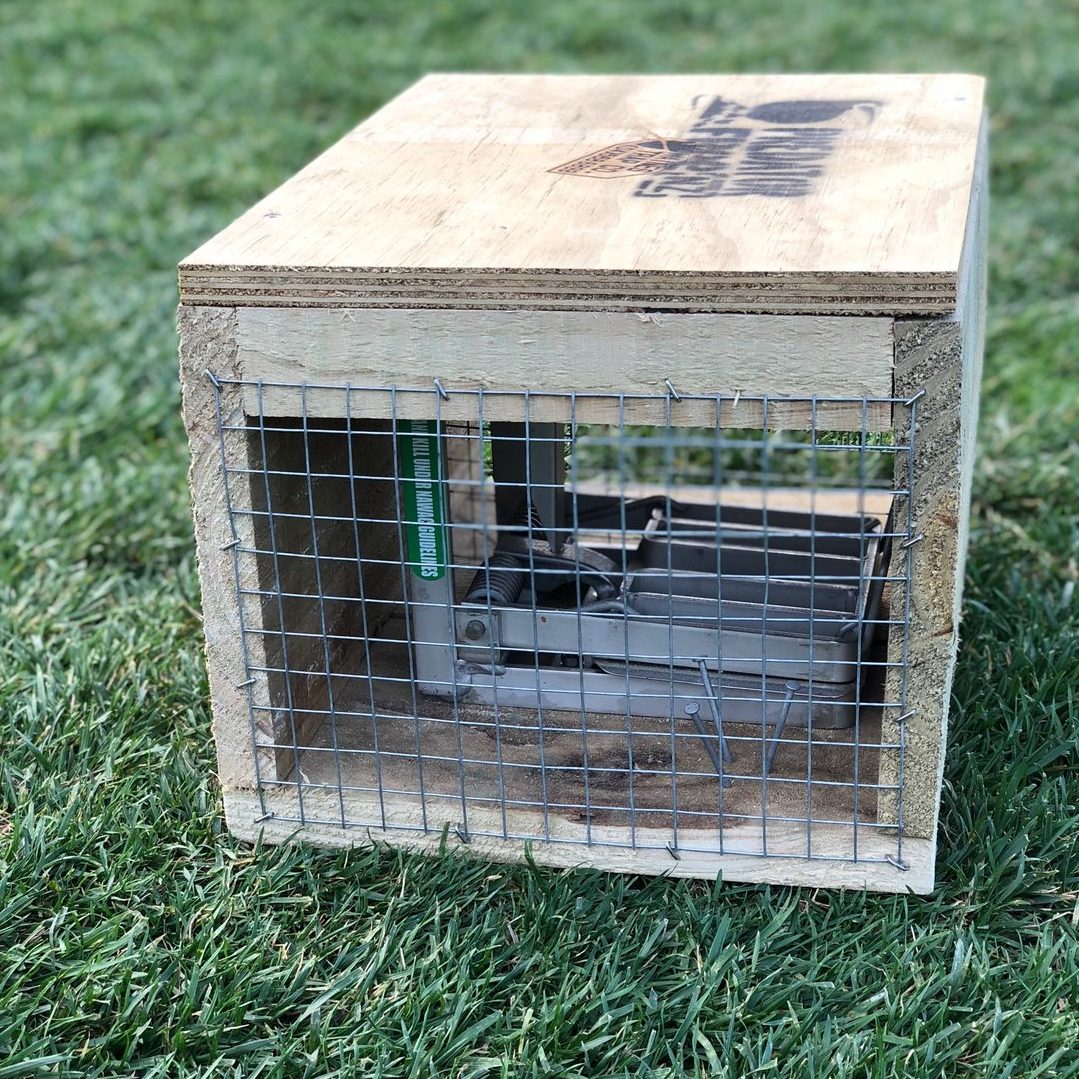ON THIS PAGE
How to use DOC traps
- Always wear gloves when setting traps and handling catches.
- Bait your DOC 150/200 traps with fresh rabbit, hare, possum, Erayz, salted rabbit, freeze-dried rabbit and/or fresh hen eggs for stoats. For hedgehogs, use an egg. For rats, use peanut butter.
- Bait your DOC 250 traps with meat (e.g. rabbit, hare, beef, possum), Erayz, salted rabbit and/or fish to catch ferrets.
- Place traps along ridges, tracks, roads, and creeks/rivers – basically, anywhere that’s easy to reach. Set them on lines about 1km apart with a trap every 100m (1km x 100m). Put a number on each trap and keep track of how many you’ve set, when and where.
- Ferrets are easier to catch in late summer and autumn.
- Check your traps about 12 times a year. Set and bait/lure traps during each check and make sure the traps are still working. Dispose of old lures/baits away from the trap.
- Maintenance of traps is critical. Read our maintenance tips.
- Longer boxes and other design features are needed to keep out weka and kea.
- To make your own tunnels or troubleshoot problems check out these detailed instructions on how to make wooden tunnels: DOC 150, 200 and 250.

How to set up and service a DOC 200 video
Watch the video below for a step-by-step tutorial on setting up a DOC 200 trap. They have a very powerful trap mechanism, so make sure you have attended a training course and/or watched the video before setting one.
Tips on how to use the DOC 200 trap
Meet Phil Waddington, the DOC series trap inventor, from Wellington (find out more about Phil here). He shares three useful tips on using the DOC 200 and his fourth tip explains how the DOC series got its name.
Tip #1 – using the safety catch
Tip # 2 – how to ensure the DOC 200 lid doesn’t wear so quickly
Tip # 3 – how to set a lighter weight to trap small rats and female weasels
Tip # 4 – how the DOC trapping series got its name
Where to buy DOC 150/200/250 traps
Buy a DOC 200 from our shop. Buy a DOC 250 from one of our key suppliers and stockists throughout NZ.
You can build your own tunnel for the DOC series traps by using these designs: DOC 150, DOC 200 and DOC 250.

